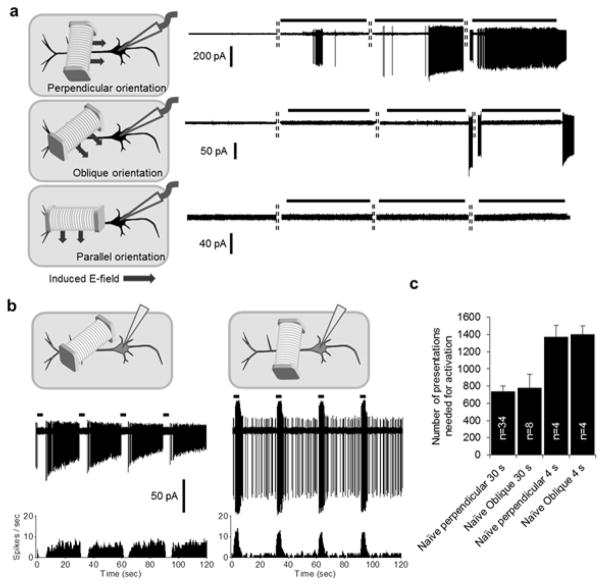Fig. 5.
Coil orientation strongly influences responses. (a) (left) Schematic depicting three orientations of the coil relative to the long axis of the PN. (right) Typical response for each orientation. Black soma indicates a ‘naïve’ PN, i.e. one that had not been stimulated previously. Note the presence of ‘OFF’ responses to oblique orientations of the coil (middle). Horizontal bars represent the 30 s duration of the 10 Hz stimulus train. The dashed vertical lines between traces indicate 20 s intervals between consecutive periods of stimulation. (b) (top panels) Schematic illustration of oblique (left) and perpendicular (right) orientations; gray somas indicate PNs that had previously been activated. (middle and bottom panels) Raw recording and corresponding PSTH (binsize = 0.1 s), respectively, elicited by the 4 s, 10 Hz stimulus. (c) Numbers of presentations needed to elicit spikes in naïve PNs for different coil orientations. The stimulus was a repetitive 10 Hz, 30 s duration, 20 s interval for the two leftmost bars and 10 Hz, 4s duration, 26 s interval for the two right-most bars. Error bars indicate S.E. Research supported by the Veterans Administration - RR&D (1I01 RX001663), the Rappaport Foundation, and by the NIH (NEI R01-EY023651 and NINDS U01-NS099700).

